 | TODAY IN SCIENCE HISTORY
NEWSLETTER - 2 DECEMBER |
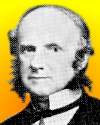 On 2 Dec 1907, Charles Drysdale died, a British physician and public health scientist. He wrote The Life and Writings of Thomas R. Malthus, a biography of the British cleric who developed a theory of population growth. Dysdale also published books on the topics of syphilis, the evils of prostitution and the dangers of tobacco smoking. It is notable how long ago public health professions were aware of the poisonous nature of nicotine in tobacco, among other noxious chemicals. Drysdale wrote about a list of such chemicals in his Tobacco and the Diseases It Produces (1875). Most remarkable is his early reference to the dangers of what we now know as second-hand smoking when smoke accumulates in an enclosed area, affecting more people than just the smokers themselves. He wrote his warning in 1875, a century ago, and several decades more. And yet, smoking remain a serious public health hazard. On 2 Dec 1907, Charles Drysdale died, a British physician and public health scientist. He wrote The Life and Writings of Thomas R. Malthus, a biography of the British cleric who developed a theory of population growth. Dysdale also published books on the topics of syphilis, the evils of prostitution and the dangers of tobacco smoking. It is notable how long ago public health professions were aware of the poisonous nature of nicotine in tobacco, among other noxious chemicals. Drysdale wrote about a list of such chemicals in his Tobacco and the Diseases It Produces (1875). Most remarkable is his early reference to the dangers of what we now know as second-hand smoking when smoke accumulates in an enclosed area, affecting more people than just the smokers themselves. He wrote his warning in 1875, a century ago, and several decades more. And yet, smoking remain a serious public health hazard. |
 On 2 Dec 1907, Charles Drysdale died, leaving a body of work in public health. He was one of the early scientists to draw attention to the dangers from the chemicals in tobacco smoke. Yet, by the time the hazards were being revealed the habit had a cultural strangle-hold. Today's Science Store pick is: Tobacco: A Cultural History of How an Exotic Plant Seduced Civilization, by Iain Gately whose book gives a sweeping cultural history of the world's most prevalent addiction. He touches on just about every subject imaginable: tobacco in literature, the movies, and society. It would be wrong to call Gately an advocate of smoking, but he clearly takes pleasure, for example, in noting that Hitler's Nazis launched one of history's most vigorous anti-smoking initiatives. The book is full of delicious trivia: Many of Shakespeare's contemporaries smoked, but there's no evidence that the Bard himself did, and none of his plays make any mention of smoking; he “kept his writing a smoke-free zone.” Smoking aficionados won't want to miss Tobacco, and it's a much healthier gift for them than a box of cigars. It is available New from $9.98. Used from $0.06. (As of time of writing.). On 2 Dec 1907, Charles Drysdale died, leaving a body of work in public health. He was one of the early scientists to draw attention to the dangers from the chemicals in tobacco smoke. Yet, by the time the hazards were being revealed the habit had a cultural strangle-hold. Today's Science Store pick is: Tobacco: A Cultural History of How an Exotic Plant Seduced Civilization, by Iain Gately whose book gives a sweeping cultural history of the world's most prevalent addiction. He touches on just about every subject imaginable: tobacco in literature, the movies, and society. It would be wrong to call Gately an advocate of smoking, but he clearly takes pleasure, for example, in noting that Hitler's Nazis launched one of history's most vigorous anti-smoking initiatives. The book is full of delicious trivia: Many of Shakespeare's contemporaries smoked, but there's no evidence that the Bard himself did, and none of his plays make any mention of smoking; he “kept his writing a smoke-free zone.” Smoking aficionados won't want to miss Tobacco, and it's a much healthier gift for them than a box of cigars. It is available New from $9.98. Used from $0.06. (As of time of writing.). | | For picks from earlier newsletters, see the Today in Science History Science Store home page. | |
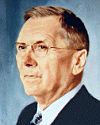 | [The purpose of flight research] is to separate the real from the imagined problems and to make known the overlooked and the unexpected. - Hugh L. Dryden, American physicist (died 2 Dec 1965).  |
 | The use of tobacco is one of the most evident of all the retrograde influences of our time. It invades all classes, destroys social life, and is turning, in the words of Mantegazza, the whole of Europe into a cigar divan. - Charles R. Drysdale, British physician and public health scientist (died 2 Dec 1907).  |
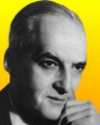 | This is only one step in a much larger project. I discovered (no, not me: my team) the function of sugar nucleotides in cell metabolism. I want others to understood this, but it is not easy to explain: this is not a very noteworthy deed, and we hardly know even a little.
[replying when asked about the significance of his Nobel prize-winning achievement.] - Luis Federico Leloir, Argentinian biochemist (died 2 Dec 1987).  |
| Before you look at today's web page, see if you can answer some of these questions about the events that happened on this day. Some of the names are very familiar. Others will likely stump you. Tickle your curiosity with these questions, then check your answers on today's web page. |
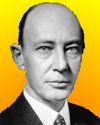 | George Richards Minot, born 2 Dec 1885, was an American physician who shared the Nobel Prize for Physiology or Medicine in 1934 for the introduction of a successful diet able to regenerate blood hemoglobin in the treatment of pernicious anemia, which was previously an invariably fatal disease.
 What was the food item that was significant in this treatment? |
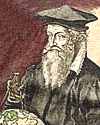 | A Flemish cartographer (1512-1594) made a now familiar innovation to the map of the world, embodying a projection on which parallels and meridians are rendered as straight lines spaced so as to produce at any point an accurate ratio of latitude to longitude. He also introduced the term atlas for a collection of maps.
 Can you name this man, or the map projection still used and known by his name? |
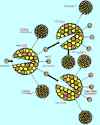 | On 2 Dec 1942, in a makeshift lab underneath the University of Chicago football stands at Stagg Field, Enrico Fermi and his team succeeded in the world's first of a new type of experiment.
 What was accomplished for the first time in this experiment? |
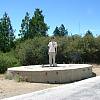 | On 2 Dec 1934, the molten glass was poured in the Corning, N.Y. for the first 200-inch diameter telescope mirror. Cooling of the 20-ton disk was controlled for about a year. Subsequent grinding was not finished until 11 years later. It was installed in the Hale telescope, named after its tireless promoter.
 In which observatory was this telescope installed? |
 | On 2 Dec 2013 (local time), a rocket was launched intended to carry a robot vehicle to land upon and explore the lunar surface. The launch was not American nor Russian. A third country was sending a mission to the moon's surface, and this was its first such launch.
 Which country was the third to send a mission to the moon's surface? |
When you have your answers ready to all the questions above, you'll find all the information to check them, and more, on the December 2 web page of Today in Science History. Or, try this link first for just the brief answers.
Fast answers for the previous newsletter for December 1: uranium • New Zealand • Wales • decade containing the year 1990 • a soiless culture whereby plants are grown with their roots suspended in water containing mineral nutrients • Rutherford B. Hayes. |
 If you enjoy this newsletter, the website, or wish to offer encouragement or ideas, please send feedback by using your mail reader Reply button. If you enjoy this newsletter, the website, or wish to offer encouragement or ideas, please send feedback by using your mail reader Reply button.
Your click on a StumbleUpon, Google+ or Facebook social button on the site webpages is also a welcome sign of appreciation. Thank you for using them. |
To find citations for quotations go to the corresponding webpage by clicking on the “quotes” balloon icon. Sources for the thumbnails appear on today's webpage with the corresponding item.
� This newsletter is copyright 2013 by todayinsci.com. Please respect the Webmaster's wishes and do not put copies online of the Newsletter � or any Today in Science History webpage. (If you already have done so, please remove them. Thank you.) Offline use in education is encouraged such as a printout on a bulletin board, or projected for classroom viewing. Online, descriptive links to our pages are welcomed, as these will provide a reader with the most recent revisions, additions and/or corrections of a webpage. For any other copyright questions, please contact the Webmaster by using your mail reader Reply button. |
--
If you do not want to receive any more newsletters,
Unsubscribe To update your preferences and to unsubscribe visit
this link 


 On 2 Dec 1907, Charles Drysdale died, a British physician and public health scientist. He wrote The Life and Writings of Thomas R. Malthus, a biography of the British cleric who developed a theory of population growth. Dysdale also published books on the topics of syphilis, the evils of prostitution and the dangers of tobacco smoking. It is notable how long ago public health professions were aware of the poisonous nature of nicotine in tobacco, among other noxious chemicals. Drysdale wrote about a list of such chemicals in his Tobacco and the Diseases It Produces (1875). Most remarkable is his early reference to the dangers of what we now know as second-hand smoking when smoke accumulates in an enclosed area, affecting more people than just the smokers themselves. He wrote his warning in 1875, a century ago, and several decades more. And yet, smoking remain a serious public health hazard.
On 2 Dec 1907, Charles Drysdale died, a British physician and public health scientist. He wrote The Life and Writings of Thomas R. Malthus, a biography of the British cleric who developed a theory of population growth. Dysdale also published books on the topics of syphilis, the evils of prostitution and the dangers of tobacco smoking. It is notable how long ago public health professions were aware of the poisonous nature of nicotine in tobacco, among other noxious chemicals. Drysdale wrote about a list of such chemicals in his Tobacco and the Diseases It Produces (1875). Most remarkable is his early reference to the dangers of what we now know as second-hand smoking when smoke accumulates in an enclosed area, affecting more people than just the smokers themselves. He wrote his warning in 1875, a century ago, and several decades more. And yet, smoking remain a serious public health hazard. 



 What was the food item that was significant in this treatment?
What was the food item that was significant in this treatment? 
 Can you name this man, or the map projection still used and known by his name?
Can you name this man, or the map projection still used and known by his name? 
 What was accomplished for the first time in this experiment?
What was accomplished for the first time in this experiment? 
 In which observatory was this telescope installed?
In which observatory was this telescope installed? 
 Which country was the third to send a mission to the moon's surface?
Which country was the third to send a mission to the moon's surface?  If you enjoy this newsletter, the website, or wish to offer encouragement or ideas, please send feedback by using your mail reader Reply button.
If you enjoy this newsletter, the website, or wish to offer encouragement or ideas, please send feedback by using your mail reader Reply button. 

Δεν υπάρχουν σχόλια:
Δημοσίευση σχολίου